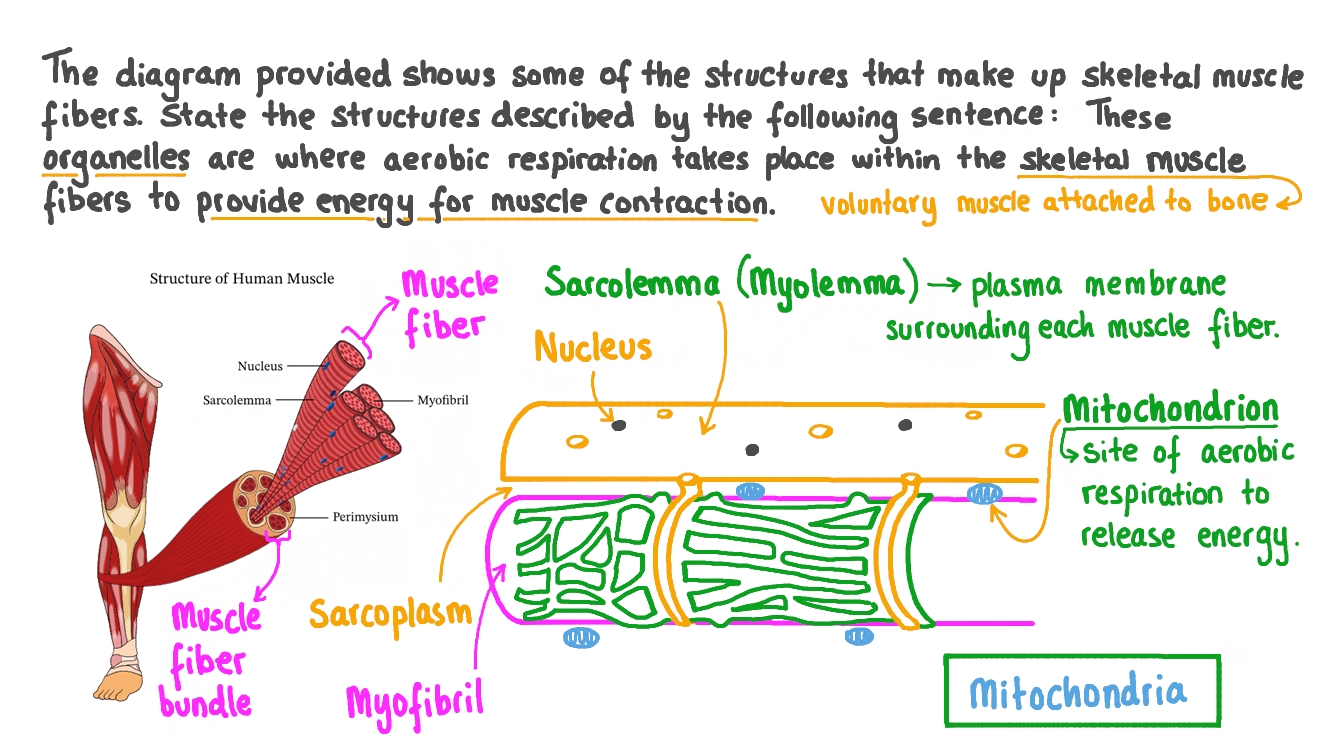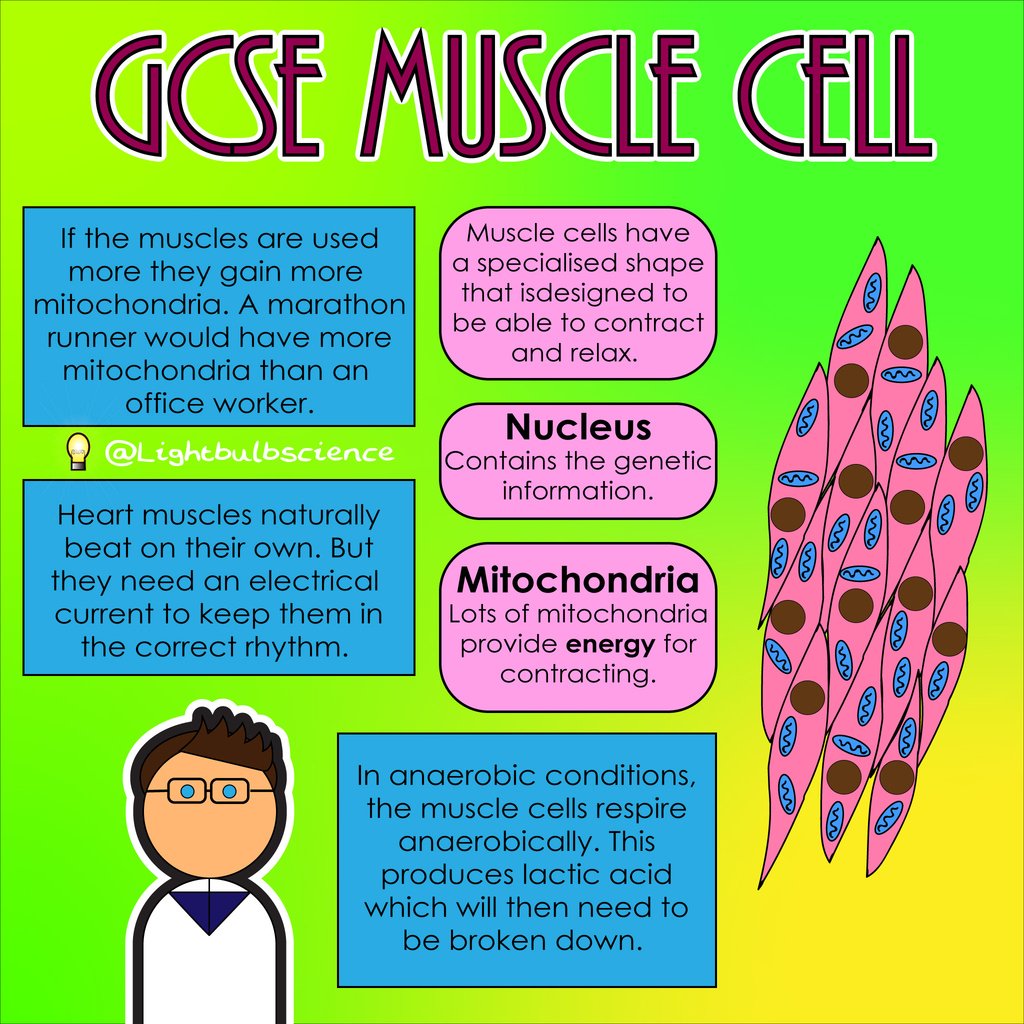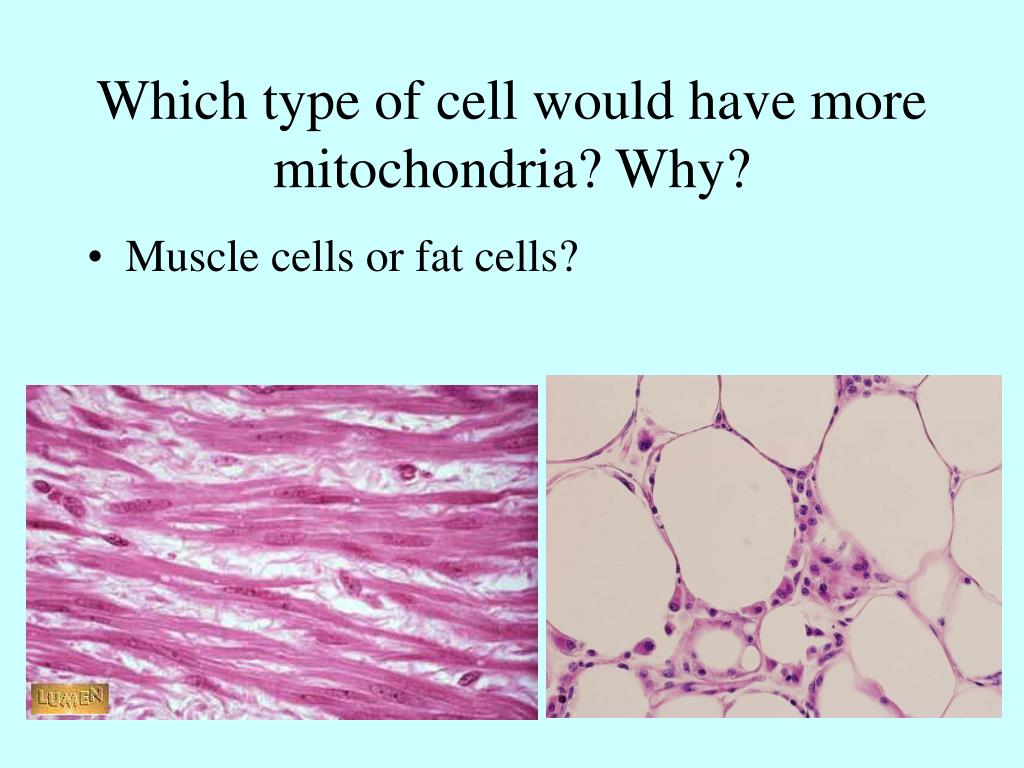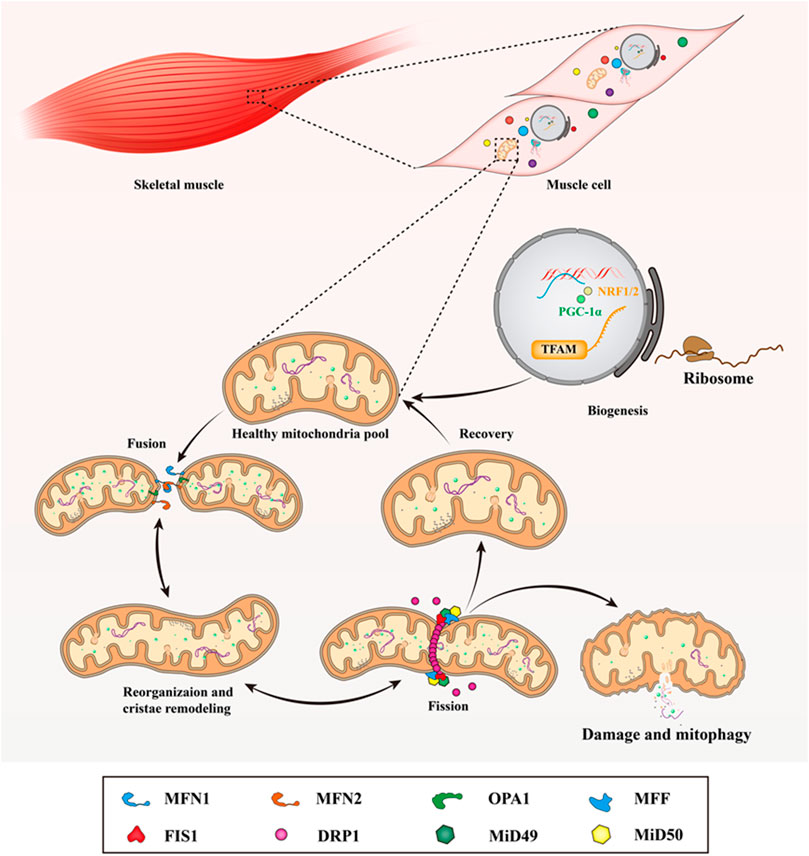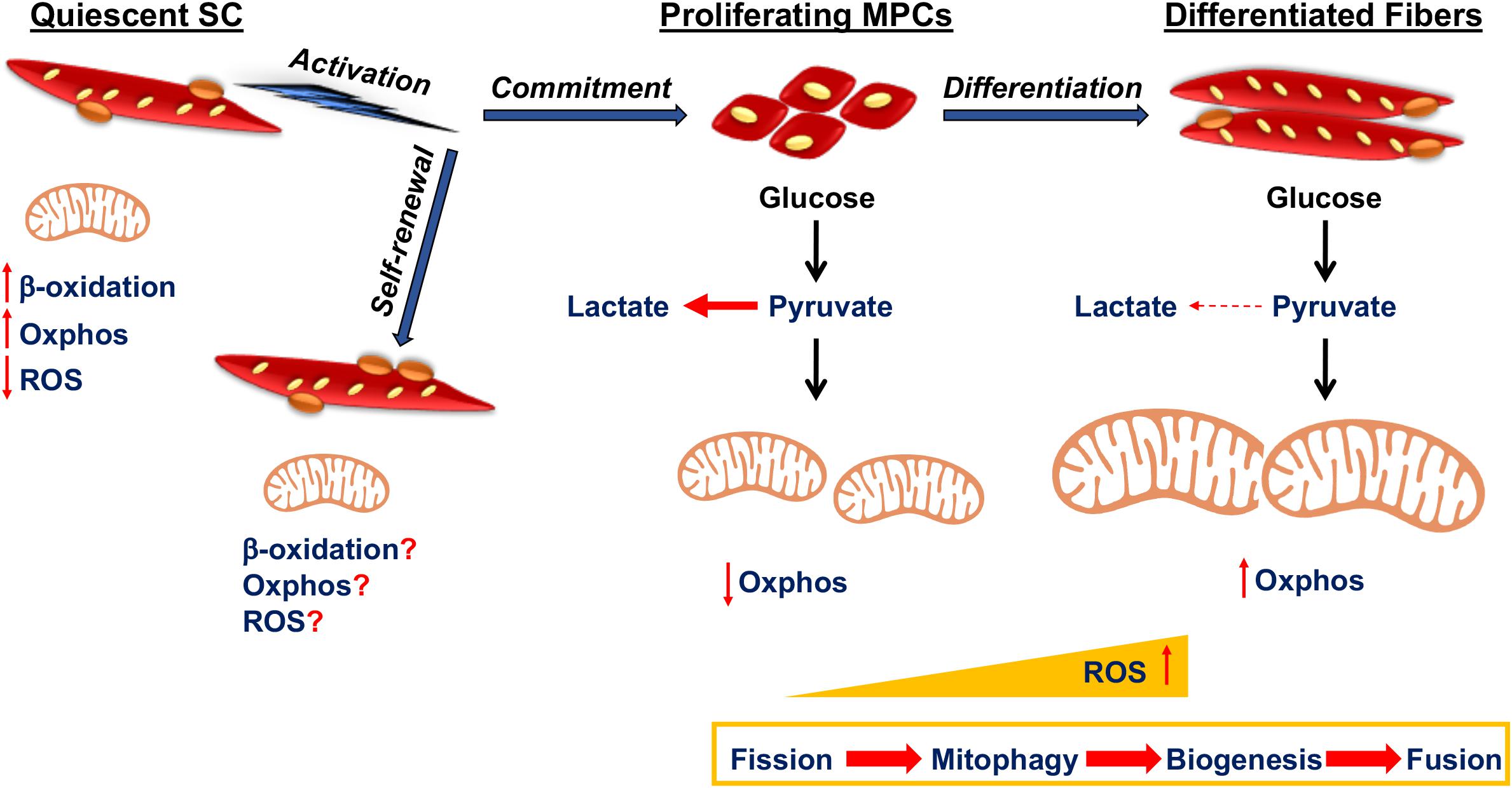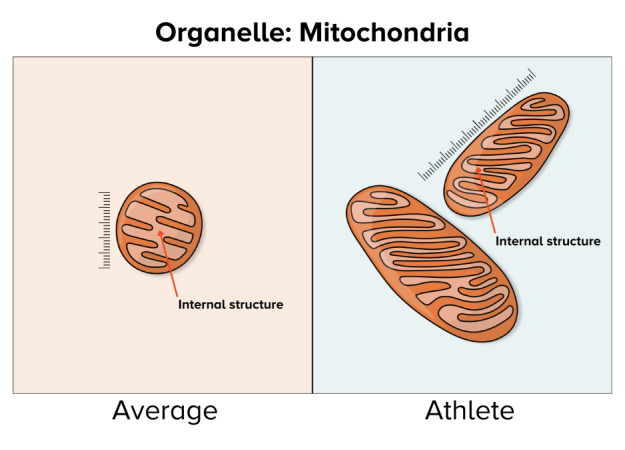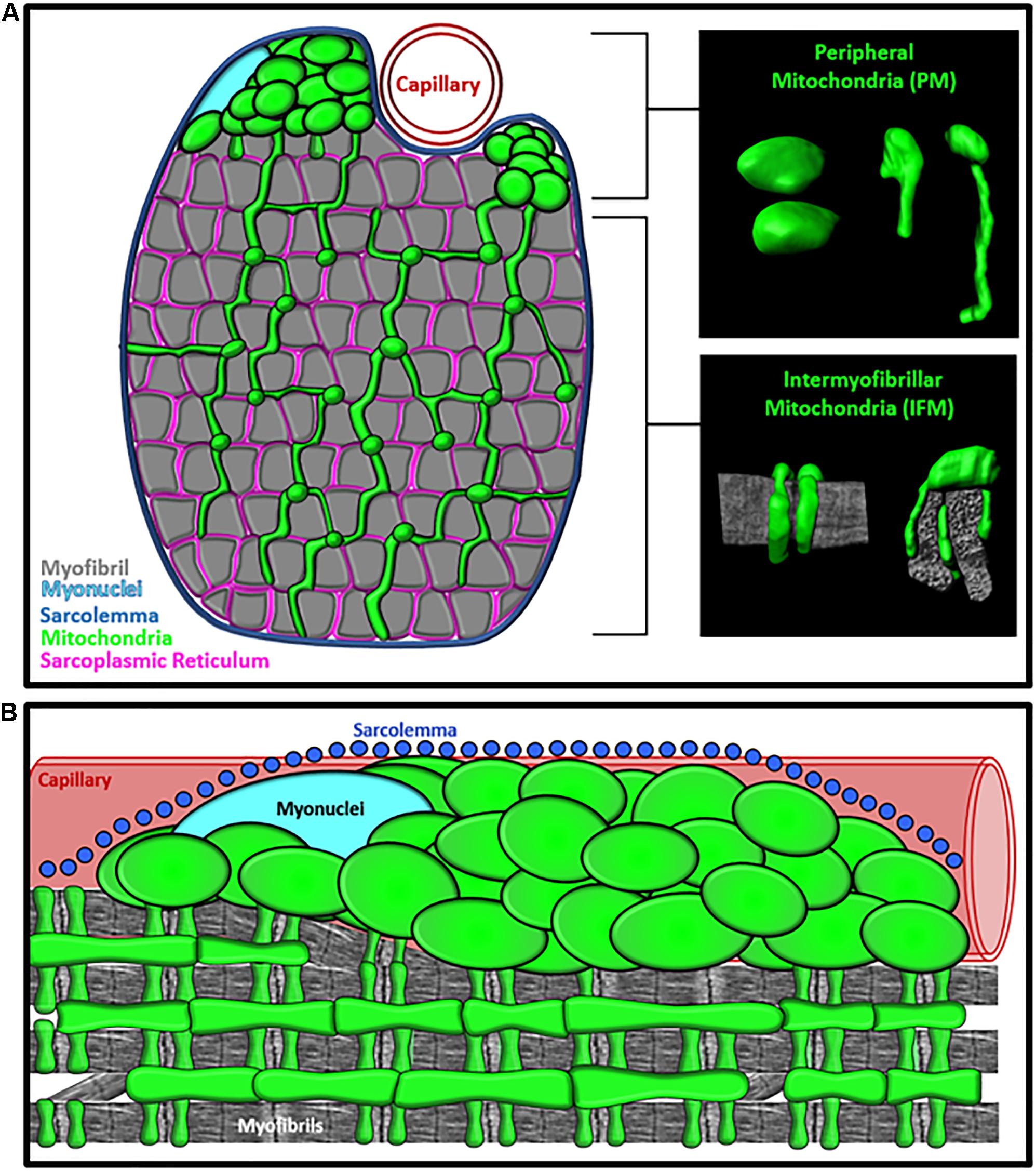Why Do Muscle Cells Have More Mitochondria

Imagine a marathon runner, legs pumping, breath coming in ragged gasps, pushing through mile after mile. What fuels that relentless energy? It's not just about the grit and determination; it's about the powerhouses humming within their muscle cells, microscopic engines churning out the energy needed for each stride.
The question isn't *if* muscle cells need a lot of energy, but *why* they require so much more compared to other cells in the body. The answer lies in the abundance of mitochondria, the organelles responsible for cellular respiration and ATP (adenosine triphosphate) production, the primary energy currency of the cell.
The Mighty Mitochondrion: Energy Producer Extraordinaire
To understand why muscle cells are packed with mitochondria, we need to appreciate the crucial role these organelles play in cellular function. Mitochondria are often referred to as the "powerhouses of the cell" because they convert nutrients, like glucose, into ATP through a process called cellular respiration.
This process involves a complex series of biochemical reactions that take place within the inner and outer membranes of the mitochondrion. The more active a cell is, the more ATP it requires, and consequently, the more mitochondria it needs to meet that demand.
Think of it like a factory: if you need to produce a lot of goods, you need a lot of machines. In the case of muscle cells, the "goods" are the force and movement required for everything from lifting a finger to sprinting a race.
Muscle Cells: Designed for Movement
Muscle cells are uniquely designed for contraction, a process that requires a significant amount of energy. This contraction relies on the interaction of proteins called actin and myosin, which slide past each other, shortening the muscle fiber.
This sliding action is fueled directly by ATP. Without a constant supply of ATP, muscles would quickly fatigue and be unable to perform their function.
There are three main types of muscle tissue: skeletal, smooth, and cardiac. Skeletal muscle, responsible for voluntary movement, contains the most mitochondria due to its high energy demands. According to a study published in the Journal of Applied Physiology, highly trained athletes often have a higher density of mitochondria in their skeletal muscle compared to sedentary individuals.
Skeletal Muscle: Powering Voluntary Movement
Skeletal muscle is attached to bones and allows us to perform conscious movements. From walking and running to lifting weights and playing musical instruments, skeletal muscles are involved in a wide range of activities.
These activities require bursts of energy and sustained effort, making a high mitochondrial density crucial for optimal performance. A paper in Nature Reviews Molecular Cell Biology detailed the molecular mechanisms that regulate mitochondrial biogenesis, the process by which cells increase their mitochondrial content, in response to exercise.
The researchers found that signaling pathways activated during exercise stimulate the production of new mitochondria in skeletal muscle, allowing it to adapt to increased energy demands.
Cardiac Muscle: The Heart's Relentless Work
Cardiac muscle, found only in the heart, is responsible for pumping blood throughout the body. It's a tireless worker, contracting continuously without rest.
The heart's constant activity demands a steady supply of energy, explaining why cardiac muscle cells also have a high mitochondrial density. Failure of cardiac muscle to produce enough ATP can lead to heart failure.
A 2020 review in the Journal of the American Heart Association highlighted the importance of mitochondrial function in maintaining cardiac health and the potential for therapies that target mitochondria to treat heart disease.
Smooth Muscle: Sustained Contractions
Smooth muscle lines the walls of internal organs like the stomach, intestines, and blood vessels. It's responsible for involuntary movements like digestion and blood pressure regulation.
While smooth muscle requires less energy than skeletal or cardiac muscle, it still needs a sufficient number of mitochondria to maintain sustained contractions. The contractions are often slower and more sustained than skeletal muscle contractions.
For example, the smooth muscle in the digestive tract contracts to move food along, a process that requires continuous, low-level energy expenditure. Therefore, it has fewer mitochondria compared to skeletal and cardiac muscle.
Mitochondrial Dysfunction and Disease
The importance of mitochondria extends beyond muscle function. Mitochondrial dysfunction, where mitochondria are unable to produce enough ATP or function properly, is linked to a wide range of diseases, including muscle disorders, neurodegenerative diseases like Parkinson's and Alzheimer's, and even cancer.
In muscle disorders, mitochondrial dysfunction can lead to muscle weakness, fatigue, and exercise intolerance. Researchers are actively investigating therapies that can improve mitochondrial function and alleviate the symptoms of these diseases.
A study published in Cell Metabolism explored the role of mitochondrial dynamics, the processes by which mitochondria fuse and divide, in maintaining muscle health. The study found that disrupting mitochondrial dynamics can impair muscle function and contribute to disease development.
Training and Mitochondrial Adaptation
Interestingly, the number and function of mitochondria in muscle cells can be influenced by training and exercise. Endurance training, in particular, stimulates mitochondrial biogenesis, increasing the number of mitochondria in muscle cells and improving their ability to produce ATP.
This adaptation allows athletes to perform at higher intensities for longer periods. Dr. John Hawley, a leading expert in exercise physiology, has extensively researched the molecular mechanisms underlying mitochondrial adaptation to exercise.
His work has shown that regular exercise can lead to significant improvements in mitochondrial function and overall metabolic health. This can be achieved by performing high-intensity interval training (HIIT) or moderate intensity continuous training (MICT) over a period of time.
Looking Ahead: The Future of Mitochondrial Research
Research on mitochondria is rapidly advancing, with scientists uncovering new insights into their role in health and disease. Understanding how mitochondria function and how they can be targeted to treat disease holds enormous promise for improving human health.
One promising area of research is the development of drugs that can enhance mitochondrial function and protect against mitochondrial damage. Another area of focus is the use of gene therapy to correct genetic defects that affect mitochondrial function.
As we continue to unravel the mysteries of the mitochondria, we can expect to see even more innovative approaches to treating and preventing diseases linked to mitochondrial dysfunction. Understanding why muscle cells have more mitochondria is not just an academic exercise; it's a crucial step towards unlocking new therapies for a wide range of debilitating conditions.
So, the next time you see someone effortlessly running a marathon or lifting a heavy weight, remember the unsung heroes working tirelessly within their muscle cells: the mitochondria, the powerhouses that fuel our every move. And be inspired by the potential that lies within these microscopic engines to help us live healthier, more active lives.
